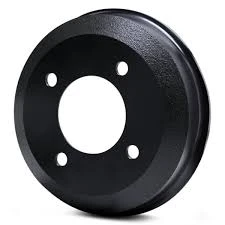
-
 Afrikaans
Afrikaans -
 Albanian
Albanian -
 Amharic
Amharic -
 Arabic
Arabic -
 Armenian
Armenian -
 Azerbaijani
Azerbaijani -
 Basque
Basque -
 Belarusian
Belarusian -
 Bengali
Bengali -
 Bosnian
Bosnian -
 Bulgarian
Bulgarian -
 Catalan
Catalan -
 Cebuano
Cebuano -
 Corsican
Corsican -
 Croatian
Croatian -
 Czech
Czech -
 Danish
Danish -
 Dutch
Dutch -
 English
English -
 Esperanto
Esperanto -
 Estonian
Estonian -
 Finnish
Finnish -
 French
French -
 Frisian
Frisian -
 Galician
Galician -
 Georgian
Georgian -
 German
German -
 Greek
Greek -
 Gujarati
Gujarati -
 Haitian Creole
Haitian Creole -
 hausa
hausa -
 hawaiian
hawaiian -
 Hebrew
Hebrew -
 Hindi
Hindi -
 Miao
Miao -
 Hungarian
Hungarian -
 Icelandic
Icelandic -
 igbo
igbo -
 Indonesian
Indonesian -
 irish
irish -
 Italian
Italian -
 Japanese
Japanese -
 Javanese
Javanese -
 Kannada
Kannada -
 kazakh
kazakh -
 Khmer
Khmer -
 Rwandese
Rwandese -
 Korean
Korean -
 Kurdish
Kurdish -
 Kyrgyz
Kyrgyz -
 Lao
Lao -
 Latin
Latin -
 Latvian
Latvian -
 Lithuanian
Lithuanian -
 Luxembourgish
Luxembourgish -
 Macedonian
Macedonian -
 Malgashi
Malgashi -
 Malay
Malay -
 Malayalam
Malayalam -
 Maltese
Maltese -
 Maori
Maori -
 Marathi
Marathi -
 Mongolian
Mongolian -
 Myanmar
Myanmar -
 Nepali
Nepali -
 Norwegian
Norwegian -
 Norwegian
Norwegian -
 Occitan
Occitan -
 Pashto
Pashto -
 Persian
Persian -
 Polish
Polish -
 Portuguese
Portuguese -
 Punjabi
Punjabi -
 Romanian
Romanian -
 Russian
Russian -
 Samoan
Samoan -
 Scottish Gaelic
Scottish Gaelic -
 Serbian
Serbian -
 Sesotho
Sesotho -
 Shona
Shona -
 Sindhi
Sindhi -
 Sinhala
Sinhala -
 Slovak
Slovak -
 Slovenian
Slovenian -
 Somali
Somali -
 Spanish
Spanish -
 Sundanese
Sundanese -
 Swahili
Swahili -
 Swedish
Swedish -
 Tagalog
Tagalog -
 Tajik
Tajik -
 Tamil
Tamil -
 Tatar
Tatar -
 Telugu
Telugu -
 Thai
Thai -
 Turkish
Turkish -
 Turkmen
Turkmen -
 Ukrainian
Ukrainian -
 Urdu
Urdu -
 Uighur
Uighur -
 Uzbek
Uzbek -
 Vietnamese
Vietnamese -
 Welsh
Welsh -
 Bantu
Bantu -
 Yiddish
Yiddish -
 Yoruba
Yoruba -
 Zulu
Zulu
painting brake drums and calipers
Painting Brake Drums and Calipers A Guide to Enhancing Your Vehicle's Aesthetics and Protection
When it comes to automotive aesthetics, many car enthusiasts focus on the bodywork, rims, and interior. However, one often-overlooked area is the brake drums and calipers. Painting these components not only adds a personalized touch to your vehicle but also provides an additional layer of protection against rust and wear. Here’s a guide on how to effectively paint your brake drums and calipers.
Preparing for the Job
Before you start painting, make sure you have the right tools and materials. You will need high-temperature brake paint, a wire brush, sandpaper, a clean rag, masking tape, and safety gear such as gloves and goggles. It's also advisable to work in a well-ventilated area to avoid inhaling fumes.
Cleaning the Brake Components
The first step in the painting process is proper preparation of the brake drums and calipers. Begin by removing the wheels to gain access. Use a wire brush to scrub away any rust, dirt, or grease from the surfaces. This ensures that the paint adheres well. After scrubbing, wipe down the components with a clean rag to remove any remaining dust and debris. If possible, consider using a degreaser to thoroughly clean the areas you intend to paint.
Masking Off Areas
painting brake drums and calipers

Once your brake components are clean, use masking tape to cover areas that you don’t want to paint, such as brake lines and the rotor surface. This will prevent any overspray and ensure a clean finish. Take your time with this step, as a good job will save you time during cleanup later.
Painting the Brake Drums and Calipers
Now, you’re ready to paint. Hold the spray can or paintbrush about 6-12 inches away from the surfaces. Apply the brake paint in light, even coats, allowing each layer to dry before applying the next. High-temperature brake paint is designed to withstand the heat generated by braking, so be sure to choose a quality product formulated for this purpose. Two to three coats are usually sufficient for optimal coverage and durability.
Curing and Finishing Up
After applying the final coat, allow the paint to cure as per the manufacturer’s instructions. This step is crucial, as properly cured paint will bond better and last longer. Once cured, carefully remove the masking tape and reassemble your wheels.
Conclusion
Painting your brake drums and calipers is a straightforward way to enhance your vehicle's appearance while also protecting these vital components from corrosion. With a little effort and the right materials, you can achieve professional-looking results that reflect your personal style. Enjoy the satisfaction of transforming your vehicle and driving it with a renewed sense of pride!
-
What Are Drum BrakesNewsJul.07,2025
-
Understanding Brake Drum MaterialNewsJul.07,2025
-
Semi-Trailer Brake Drum: A Key Component for Extreme Loads and Long-Distance TransportNewsJul.07,2025
-
Drum Brake Pads for SaleNewsJul.07,2025
-
Brake Drums for SaleNewsJul.07,2025
-
Brake Drum ManufacturerNewsJul.07,2025
-
Aluminum Brake Drums: The Future of High-Performance CarsNewsJul.07,2025
